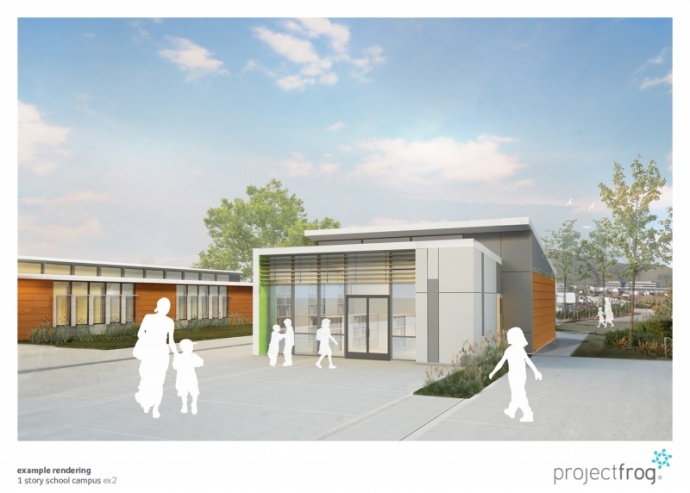UH Mānoa Breaks Ground on Net-Zero Energy Classrooms
By Maui Now Staff
Contractors broke ground for the installation of two 1,500-square-foot, net-zero energy classrooms, for the University of Hawai‘i at Mānoa College of Education on June 15, 2015.
The project is funded by the University’s Hawai‘i Natural Energy Institute through a grant from the Office of Naval Research. Site work, hardscape, and landscaping are funded by the UHM Office of Planning and Facilities.
The net-zero structures are part of a multi-year effort to delineate the effect of usage and building design on energy demand.
The classrooms, designed and installed by Project Frog, a California architecture company, will be energy neutral–they will generate at least as much energy as they will use.
“This project is part of a larger research program, funded by ONR, intended to evaluate the performance and integration of a range of energy technologies that includes energy efficiency, storage and renewable generation systems,” said Dr. Richard Rocheleau, HNEI director.
HNEI is collaborating with the UH Mānoa School of Architecture’s Environmental Research and Design Laboratory to corroborate energy simulation models used to predict energy consumption and thermal comfort.
These classrooms are intended to be research platforms. They will be fabricated in afactory, then assembled on site, reducing overall construction time and costs.
Energy for the classrooms will be provided by 5 kW photovoltaic arrays mounted on each of the two rooftops.
The stand-alone classroom buildings are being constructed on plot next to Castle Memorial Building and behind the College of Education’s Wist Hall.
The classrooms will also incorporate a real-time dashboard that will display current and past operating conditions, including comfort indicators–temperature and humidity–as well as energy use by the different components–lighting, ceiling fans, air conditioning and plug loads. As an educational tool, the dashboard will also help users visualize the energy usage and generation to encourage more efficient behavior.
“This is a real stake-in-the-ground milestone for the university, as we embark on a new journey toward aggressive sustainability and energy goals,” said Assistant Vice Chancellor Dr. Stephen Meder of the Office of Planning and Facilities, Meder is a key advocate for this project.
The classrooms feature high-efficiency LED lighting with sensors that respond to the amount of natural daylight in the room to control lighting usage. A number of lighting modes can be programmed into the switch that will accommodate various visual requirements.
Windows and ceiling fans will operate to maximize natural ventilation for most of the year. Comfort during Hawai‘i’s hottest seasons can be maintained using a state-of-the-art, split air conditioning system with variable capacity scroll compressors to reduce cycling and excessive temperature fluctuations.
The walls and ceiling are highly insulated and the windows feature high-performance glazing that allows light through, while blocking the infrared spectrum responsible for heating.
The two UH classrooms are the last of five platforms installed in the state. The first classroom was built in 2011 at Ilima Intermediate School in Ewa Beach, O‘ahu. Two classrooms were also installed at Kawaikini New Century Charter School in Līhuʻe, Kauaʻi, in 2013.
Building design and construction has been modified as the project progressed, incorporating lessons learned from previous Project Frog models. The buildings are expected to be complete by the spring of 2016.
This project supports the Department of Navy’s energy programs to demonstrate technologies that enable increased implementation of alternative energy sources and promote energy security.
For more information about Project Frog, go online.










